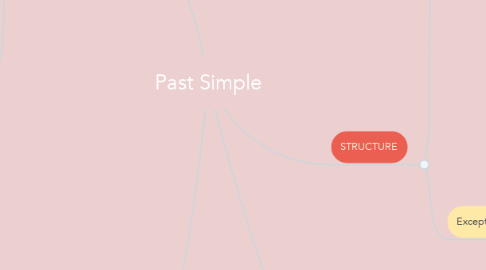Past Simple
por Monica Arias Orrego


1. we use the simple past
1.1. when we are talking about something that continued for some time in the past.
1.2. when we are talking about something that happened several times in the past.
1.3. when we are talking about an event that happened at a particular time in the past.
2. sentence structure
2.1. 1. Affirmative sentences Subject + main verb ... • Examples: * She was a doctor. * The keys were in the drawer. * I wanted to dance.
2.2. Negative Sentences Subject + auxiliary verb ("to do") + "not" + main verb ... • Examples: * I didn't want to dance. * He didn't learn English. * They didn't believe him. Note: In negative phrases, the auxiliary verb goes in the past tense ("did") and the main verb stays in the infinitive.
2.3. interrogative form Auxiliary verb + subject + main verb ...? • Examples: Did you want to dance? Did he learn English? Did they believe him? Note: As in negative sentences, the auxiliary verb goes in the past tense ("did") and the verb main remains in the infinitive.
3. If the verb ends in -L, we double the L and we add -ED. Verb (base form) + -L + -ED examples: travel: travelled label: labelled
4. STRUCTURE
4.1. To form the past simple with regular verbs, we add the ending "-ed" to the verb. The shape is the same for all people (I, you, he, she, it, we, they).
4.1.1. • Examples: want → wanted learn → learned stay → stayed walk → walked show → showed
4.2. Exceptions:
4.2.1. 1. For verbs that end in an "e", we just add "-d. • Examples: change → changed believe → believed
4.2.2. 2. If the verb ends in a short vowel and a consonant (except "y" or "w"), we double the final consonant. • Examples: stop → stopped commit → committed
4.2.3. 3. With verbs ending in a consonant and a "y", the "y" is changed to an "i". • Examples: study → studied try → tried
4.2.4. -If the verb ends in -y preceded by a vowel, we regularly add -ED. example: play played

